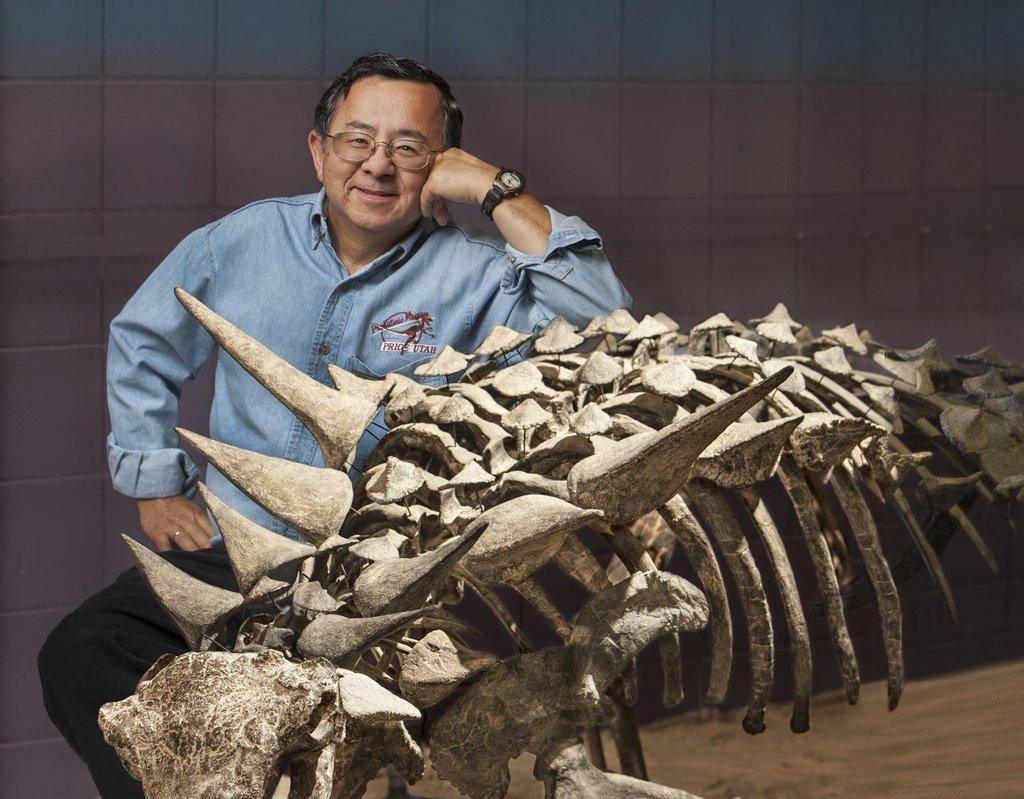Kenneth Carpenter earned his undergraduate degree in geology in 1980 at the University of Colorado. From there, he worked in various museums across the country, including the Academy of Natural Sciences in Philadelphia, the Mississippi Museum of Natural History, the Museum of the Rockies in Montana and more.
Finally, Carpenter settled at the Denver Museum of Natural History, where he worked for 22 years. While he was working in Denver, he earned his PhD once again at the University of Colorado.
With his long history and strong background, essentially Carpenter’s entire career involved museums. He was eager when he saw the director position open at the Prehistoric Museum in 2009 and chose to apply.
The Prehistoric Museum always struck Carpenter as a place that had a lot of potential. Upon being hired as the museum director, he brought nearly 30 years of experience to the museum to take what existed and shape it into the professional organization that was envisioned in 1961.
Carpenter had two main areas of the museum that he focused on. The first was revamping the exhibits and giving them organization. He stated that there was not a coherent theme in the exhibits as they were based on what had been donated or loaned to the museum.
It was also obvious to Carpenter that the school teachers in the area were not using the museum as an educational resource. With these things in mind, Carpenter made the decision to tell the history of the life in Eastern Utah, which would then give teachers a tool they could utilize for students. He bounced between paleontology and archaeology to ensure that both sides would be brought up to speed as much as possible.
Recently, Carpenter retired after 10 years as the director of the museum. He stated that his predecessor, Tim Riley, will continue with the improvements in his stead.
The collections were another aspect that was needed to be brought up to a professional standard as there was a lot of missing data. Carpenter stated that there is still a lot of work to be completed but he is confident that they are headed in a positive direction.
Throughout the years, Carpenter said that he loved shaping a small museum into something it could pride itself on. He stated that the previous director had worked toward the first accreditation and much has changed since then. It was necessary for Carpenter to ensure that the museum was living up to the standards it had set forth for itself. He wished for the museum to have great exhibits, be a tool for teachers and more.
“It was actually all of it that was kind of fun to do,” said Carpenter, reflecting on his tasks at the museum.
Carpenter grew up in a military family, giving him the opportunity to travel all over the world. He went to a French elementary school in the first grade and upon moving to the states, he was required to complete the first grade again to be brought up to speed.
Carpenter said that traveling throughout the world gave him a great appreciation of different cultures. Carrying this with him when he began the archaeology exhibit, he said he could appreciate that the Native Americans that lived in Utah were not just abstractions.
“They were real, living people,” he stated. With this in mind, Carpenter worked to ensure that was conveyed upon creating the archaeology exhibits. He wished to make the people come alive.
Now that he is retired, his wife is working to complete her master’s degree in geographic information systems. She needed a place to work from and suggested a temporary move to Vernal, which worked due to Carpenter also being a paleontologist. His research has involved the Dinosaur National Monument and the move will give him the opportunity to be close to the area.
Carpenter concluded with the fun fact that he became involved in museums when his mother took him to see Godzilla at age five. He was so wowed by the film he decided then that he was going to be a paleontologist.

